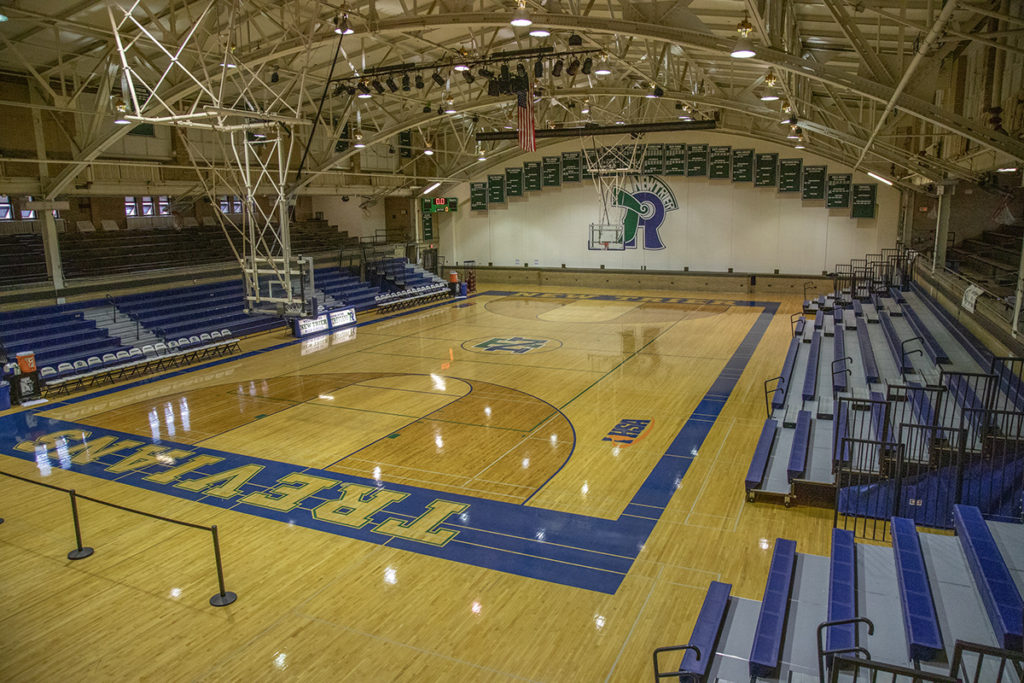
Nearly 100 years old, Gates Gym may be torn down in plan to overhaul New Trier’s athletic facilities
Board of Education could approve plan that would reimagine east side of Winnetka campus as early as February of ’21
Nearly 100 years after it was first constructed, New Trier High School’s Gates Gymnasium may be nearing the end of its storied run.
District officials delivered updates to the board of education Monday, Dec. 14, during its regular meeting on potential renovations to address the “significant underinvestment over many years” in the east side of the Winnetka campus.
Administrators have been reviewing improvements to century-old student athletic facilities since August 2019 when the board approved the framework for the district’s 15-year facilities plan.
One of the central areas the facilities plan targets is Gates Gym, which was built in 1928 on the east side of the Winnetka campus. In addition to the gym, officials are zeroing in on improvements to the ancillary areas.
The historic facility is named after Leslie Freeman Gates, a New Trier School Board member and president in the 1920s who died suddenly in 1928, according to the Winnetka Historical society.
Although no formal action has been approved, officials are indicating initial support for a plan that would knock down Gates Gym and construct a brand-new athletic and kinetic wellness facility for between $60-$75 million.
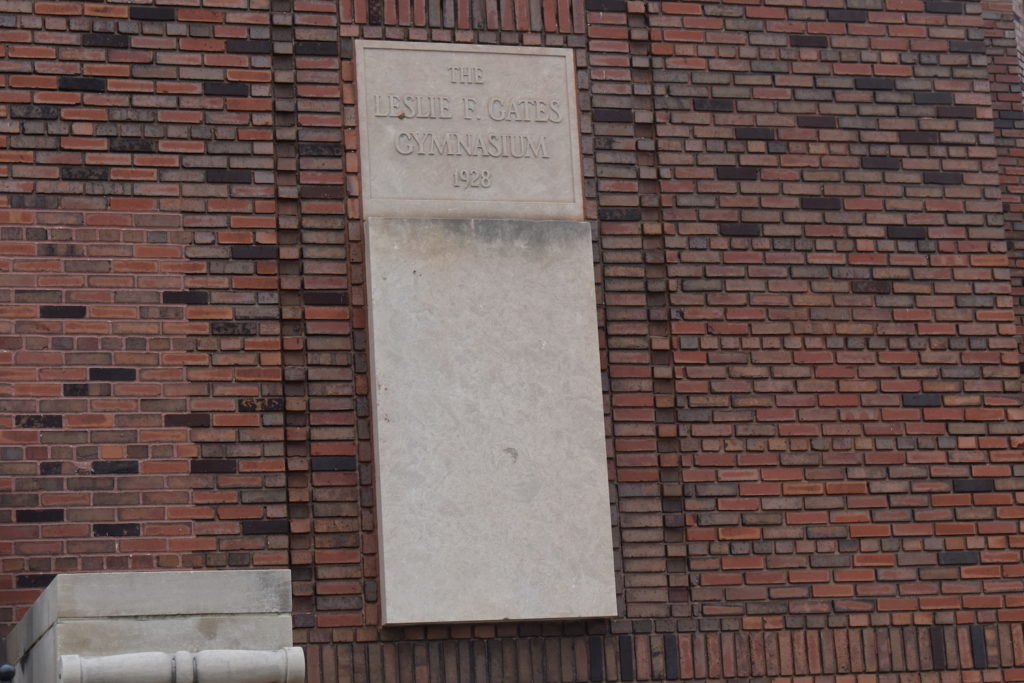
Representatives from the architecture firm Wight & Company guided the board through five options that would upgrade what school officials described as the district’s “antiquated facilities with out-of-date gyms and classrooms.”
Two options that would preserve the existing Gates Gym and provide limited updates at a lesser cost were viewed unfavorably by both the architects and the board.
Additionally, two options that proposed large-scale teardown projects with extensive additions were predominantly dismissed because of cost concerns and time restraints.
The option recommended by Wight & Company — and the one that was seemingly met with informal approval by the board — was a plan to raze Gates and build a new facility. Two variations of this option were presented to the board.
The first variation includes new construction with a large fieldhouse in the lower level, an indoor track and potentially an artificial turf field.
That area would be free of columns and beams — a significant issue in the current facilities — and fix existing mechanical issues.
Above the fieldhouse would be a new competition gym for all sporting events and kinetic wellness activities, according to the plans presented, as well as a room for a new weight-training area, several additional auxiliary gyms, new classrooms and a rock climbing wall.
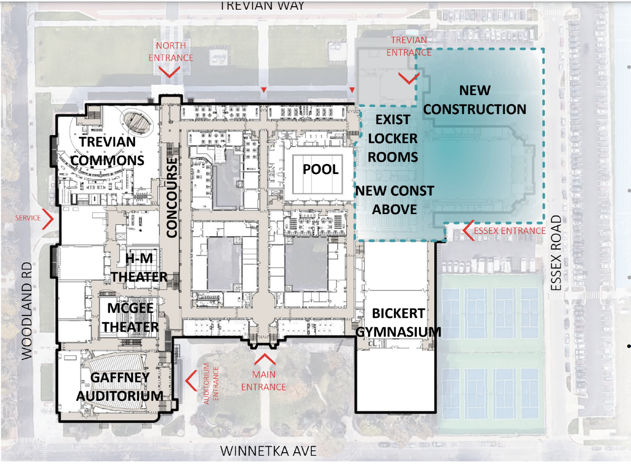
The architects said this layout keeps the existing kinetic wellness locker rooms in which the district invested in several years ago.
The second variation to the teardown option takes renovations “beyond in two very important ways,” said Kevin Havens, executive vice president and director of design at Wight & Company, by adding a third story and a six-lane regulation indoor track.
In this version, the new third story would house classrooms and collaborative spaces available for any academic programming and professional development that New Trier offers.
Havens said this option gives the district “a much brighter future.” He also said it could be the “sweet spot” of the proposed plans, given that it offers a mid-level investment but provides “so much improvement.”
Prefacing the outline from the architecture firm were presentations from Associate Superintendent Chris Johnson and Athletic Director Augie Fontanetta.
Fontanetta highlighted some of the challenges presented by the aging infrastructure on this part of the campus.
“One of the challenges with the east side of the Winnetka campus is the structure that is there and the spaces that are there are not easily changed,” he said. “And so as we went through this needs analysis, we went through different iterations … and in order to really best serve our students we kind of really need to take this down to the ground so that we can be able to serve our students in an efficient manner.”
Fontanetta showed how many of the spaces in the current facility are small and have been adapted over time.
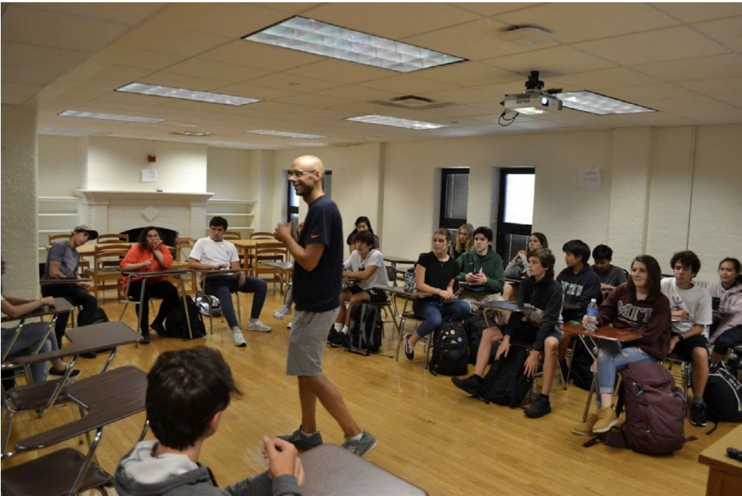
The district’s climbing wall was once a racketball court. The current weight room is a converted small gym. The kinetic wellness classrooms are small, irregularly shaped, and don’t have adequate furniture, Fontanetta said, adding they are difficult for students to access, particularly from the west side of the campus.
One of the classrooms and the restrooms are not accessible for those with disabilities or if a student has to use crutches.
“Gates was really built in the ’20s as a single-gender, single-event facility,” Fontanetta said. “ … The other areas around it were just not built for what our needs are today.”
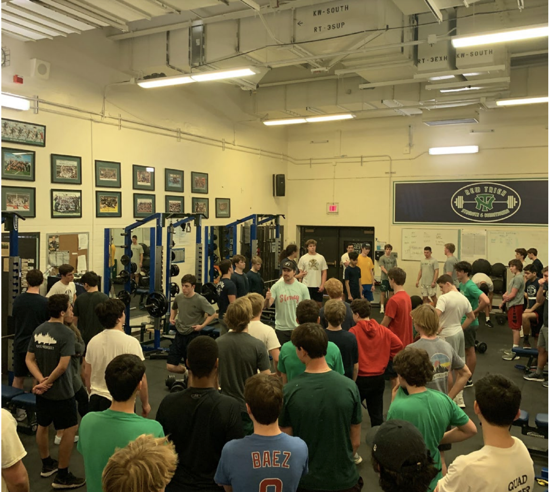
Both the strength and conditioning and weight training areas are places the district focused on in their review.
“Currently, the areas that we have are separated out so that we’re not able to host enough kids in one space,” Fontanetta said. “(This is) particularly challenging for kinetic wellness, if you’re team-teaching, or after school when you have large teams trying to work out at once.”
The indoor track space is another deficiency and one of New Trier’s “glaring needs,” Fontanetta said. Between both the boys and girls programs, New Trier has almost 400 kids on track teams, according to Fontanetta.
New Trier’s indoor track is not regulation size and it has columns and weight cages in it that make the space “very challenging, very cramped and very unsafe for practices,” Fontanetta said.
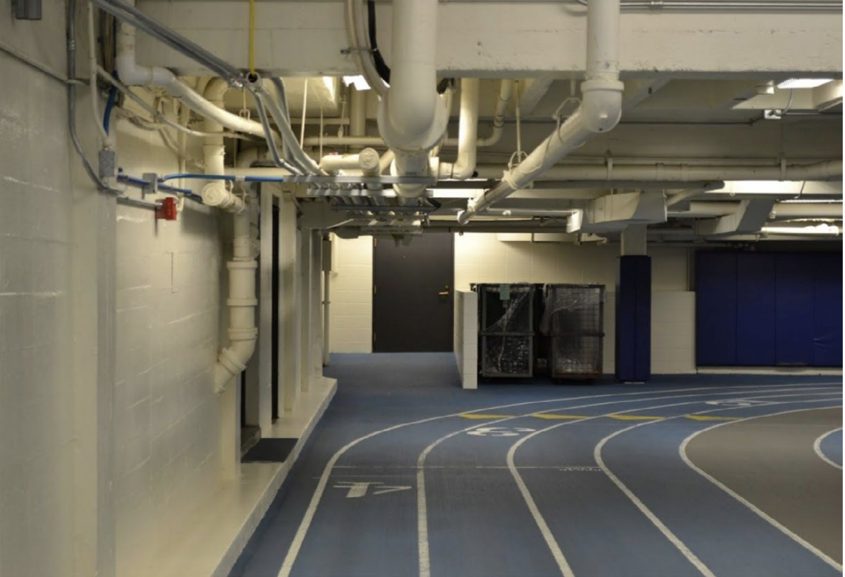
Additionally, officials said, the Gates Gym balcony is difficult to access, the concrete bleachers are not an effective use of space and there is no air conditioning.
A peer-district comparison determined that although New Trier has the largest enrollment in the Central Suburban League conference and has the highest number of student-athletes, its facilities are lagging behind those of their peers.
New Trier is also the only CSL South school (Glenbrook South, Glenbrook North, Maine South, Evanston Township, etc.) without a fieldhouse.
Johnson told the board that the administration has been “carefully studying” how it can potentially make these updates work within existing resources, adding that plans do not include a referendum.
He proposed the district could make the financing work through the existing tax levy and reserves.
Officials are continuing to study funding paths, Johnson said, adding that the administration will bring more information to the board in the near future.
Financial details were not presented at the meeting but Johnson said early estimates are in the $60-75 million range.
The board of education is scheduled to consider action on these plans at its February meeting. A board workshop session is set for the week of Jan. 11, and the board will likely discuss options in more detail during its regular meeting on Tuesday, Jan. 19.
If the board were to approve the project in February, work would begin in December of 2021, officials estimate, saying the construction process would take 18-20 months and the facility could be ready for usage in August of 2023.
Fontanetta assured the board that New Trier would not lose an athletic season because of the construction and that teams would utilize facilities on the Northfield campus.
The full presentation made at the meeting can be found here.

Martin Carlino
Martin Carlino is a co-founder and the senior editor who assigns and edits The Record stories, while also bylining articles every week. Martin is an experienced and award-winning education reporter who was the editor of The Northbrook Tower.


